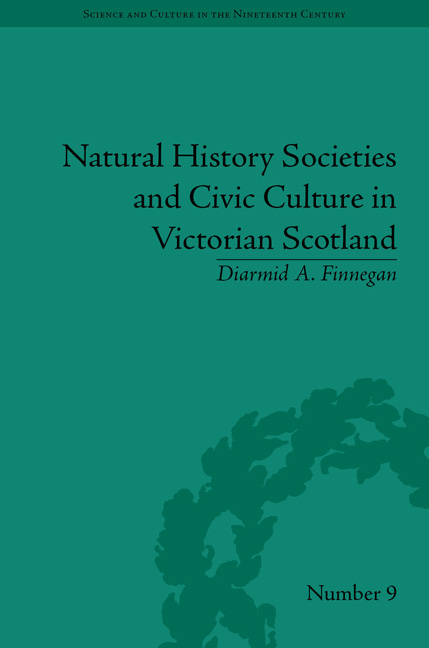Book contents
- Frontmatter
- CONTENTS
- Acknowledgements
- List of Figures and Tables
- Introduction
- 1 Founding Narratives
- 2 Fieldwork and Excursion Culture
- 3 Natural History and Civic Pride
- 4 Natural History and Self Culture
- 5 Organizing Subscriber Science
- 6 Scientific Motives and Civic Virtue
- Conclusion: Between Science and Civic Society
- Notes
- Works Cited
- Index
6 - Scientific Motives and Civic Virtue
- Frontmatter
- CONTENTS
- Acknowledgements
- List of Figures and Tables
- Introduction
- 1 Founding Narratives
- 2 Fieldwork and Excursion Culture
- 3 Natural History and Civic Pride
- 4 Natural History and Self Culture
- 5 Organizing Subscriber Science
- 6 Scientific Motives and Civic Virtue
- Conclusion: Between Science and Civic Society
- Notes
- Works Cited
- Index
Summary
In 1885, two years after Hewett Cottrell Watson's tirade against the error-strewn reports of provincial natural history societies, the President of the Aberdeen Natural History Society James Trail, Professor of Botany at the University of Aberdeen, and the Secretary, John Roy, Aberdeen schoolmaster, published a paper in the Society's Transactions entitled ‘Additions and Corrections to Topographical Botany for the Counties from Forfar to Elgin Inclusive’. The errors and gaps in Watson's own publication were pointed out by two botanists committed to the kind of provincial society that Watson had attacked. Trail and Roy were careful to correct Watson either on the basis of ‘personal investigation’ or ‘information supplied on trustworthy evidence’. In addition to contributing data advancing botanical science, the two provincial botanists reasserted the value of local naturalists’ societies to science.
This book has argued that natural history societies were shaped by an overriding aim to simultaneously interest local publics and contribute to science. This chapter, building on Chapter 5, examines further the kinds of scientific aspirations exemplified by Trail and Roy without losing sight of more exoteric cultural concerns. By looking more closely at how members worked to establish the scientific reputation of their societies, alternative sets of negotiations between social and scientific agendas are brought into view. Alongside such locally negotiated collaborations, the tensions created between the work of the members to present their societies as significant bodies in local civil society and their efforts to offer work that was scientifically credible will also become increasingly apparent.
The chapter is divided into three sections. The first section takes two particular research routines central to the scientific efforts of the societies – recording and mapping – and examines at the level of scientific praxis the tensions generated between epistemic and moral imperatives. The second section recounts an individual scientific field project, namely the investigation of the Clava shell-bed near Inverness.
- Type
- Chapter
- Information
- Publisher: Pickering & ChattoFirst published in: 2014



